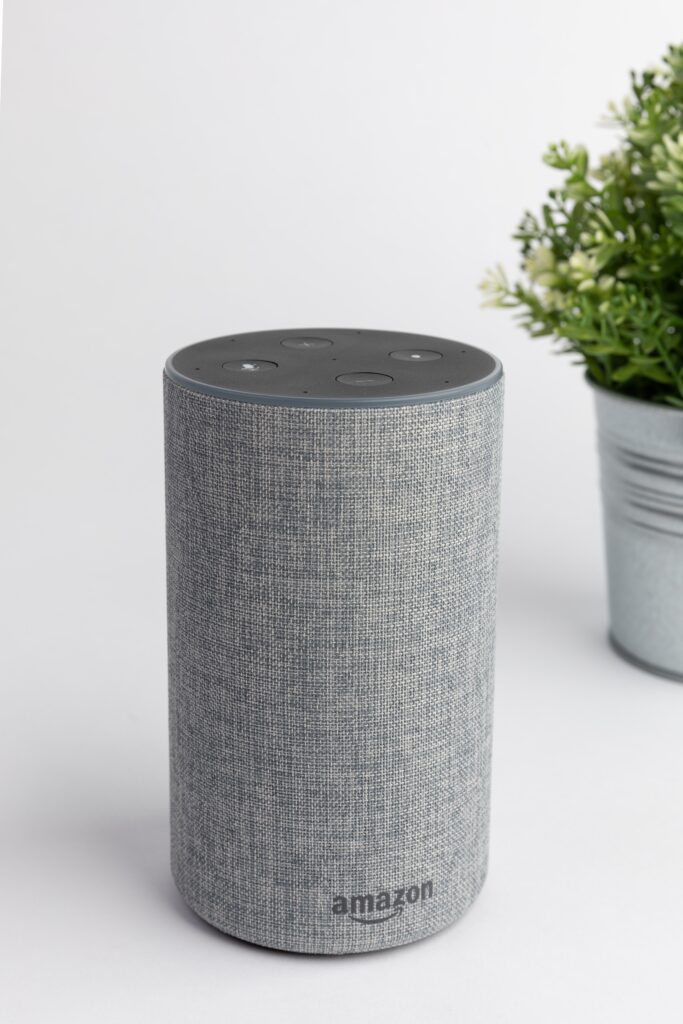An Alexa Champion

I was able to speak with Illarna Nche, an Amazon Alexa developer for voice first apps, (Episodes 44 and 45 of the Sound In Marketing Podcast). Illarna started her sound journey in voice by building voice apps from scratch. These apps were both from the user experience (UX) end as well as from the technical design perspective. All of her hard work led her to become just one of only two Alexa Champion recipients from the UK for 2020.
For those unfamiliar with the term, an Alexa Champion is a “pioneer in voice”. Alexa Champion’s are voice developing experts and contribute to Amazon Alexa continuing app design. Ilarna being a recipient, has given her access to a wider range of voice community connections as well as a larger opportunity to cause larger change and movement impact in the industry as a whole.
We discussed the difficulties in creating a “really good voice app”. The hardest part stems from coming up with an app that both encourages interaction and creates an experience promoting repeat usage. You need to be a good developer. However, “To make a great voice app, you need to have that good user experience (UX) ability [as well].”
You can have voice apps that, developmentally, are amazing, however, if you can’t get a user to engage and come back again and again then it’s absolutely pointless.
Illarna Nche
How To Develop Voice Apps
But what if you know nothing about coding or computer science? What if you didn’t learn this at 16 or know any computer programming language like Illarna?
Although we don’t all know code or design, there is a huge amount of resources available. Tools like Voiceflow, and VoiceXP, for instance, allow their clients the ability to make quality voice experiences built off of templated designs.
For those of you a little more familiar with computer science, Amazon has skill tutorials available for free to the public to help you learn the software and eventually create an app of your own.
There are also companies like Matchbox.io, Instreamatic, and Witlingo that can come alongside you and help you with the creative and/or the developmental side of things.
Voice First
Voice first is a powerful term not to be mistaken for voice only. What it actually means is “the ability to interact with a brand or product without being dependent on visuals.”
The race to getting a brand ready sonically can be a good and a bad thing. Although it’s good to see the adoption and interest, true success is measured by the long game. A brand can begin to understand their fit in voice tech after a proper voice strategy has been established.
Voice First Doesn’t Happen Overnight
Not every brand can be voice first; at least not initially. As Ilarna and I discussed, you have to look at the consumer and/or user. How do they receive content? What platform(s) are they on? Are they a new, existing, or occasional user? Once these things are defined and established, messaging is delivered accordingly.
For example, a voice experience designed with an existing user in mind, should not repeat introductory information as often. It’s obtrusive, unnecessary, and affects the user’s experience in a negative way. However, a new user needs more prompting and context. A habitual usage user only needs small prompts to get to the experience they already are expectant of.
Content and context is key.
Once these details have been discussed and cultivated, a brand starts thinking about a voice first experience like an app. Entering all the different sound markets is daunting and often too overwhelming. Ilarna suggests brands focus on “one great app” that can be cultivated, curated, and mastered.
Voice apps are not just experiments done through 3rd party developers [like Matchbox.io], they are experiments through the platforms themselves.
Illarna Nche
Not sure where to focus? The most popular and best success as of late is in daily content; something that the user has or needs to interact with over and over and over again.
A Critical Voice

Smart speakers is a market that is becoming widely adopted and a critical market for any brands ready for their Voice First entrance. Take a look at these stats according to Voicebot.ai. The number of smart speakers in the home grew from 67 million in December 2017 to 157 million in December 2019. Usage of smart speaker skills is also on the rise. We now know what times of day people are voice shopping, the most requested topics, as well as the frequency.
Voice has become adopted as an everyday use for searching, shopping, task organization, and information gathering. The sooner our brands and products can be introduced and represented in the voice space the better.
Add Voice To Your Marketing Budget
Now is the time to bring voice experiences and interactive to your marketing budget.
Some great examples of entertainment based content would be the Spiderman Alexa app. This app is full of interactive content for both Spiderman Far From Home and Spiderman Homecoming, including quizzes, jokes, behind the scenes and a “phrase of the day”.
In 2018, Westworld joined in with Westworld Maze; a voice activated experience that included multiple characters and their voices for the fans to have their own “choose your own adventure” experience while waiting for season 2 to launch.
Other innovative uses of voice is Samsung Smart Home tethering all their smart appliances and devices to this Alexa app. There’s also Capital One who allows you to manage your financial accounts through your Alexa device.
Domino’s has set up their Alexa skill to help streamline their customer’s pizza delivery service even further.
Seattle Children’s Hospital and Boston Children’s Hospital joined together to develop a Flu Doctor Alexa App to help better educate on preventative care and resources.
What’s Next?
There is a world of exploration happening in and through voice technology. However, the truly creative design and usage of voice experience hasn’t even happened yet. It’s exciting to think what brands will come up with in the next 5, 10, 20 years.
The trends are out there and people are ready to utilize them. We are getting to the point of voice technology being just as relevant and dependent upon as mobile phones.
Related Articles on Voice First
For more on Voice First, check out:
Developer Diversity in AI Creates The Best Product
Let’s Make Sound On Purpose
Excited to explore your brand soundscape? Dreamr Productions would love to help. Contact us today for more information.


